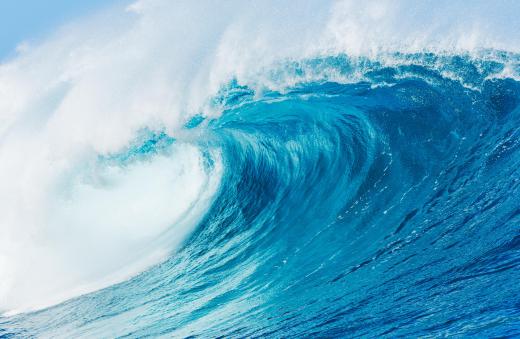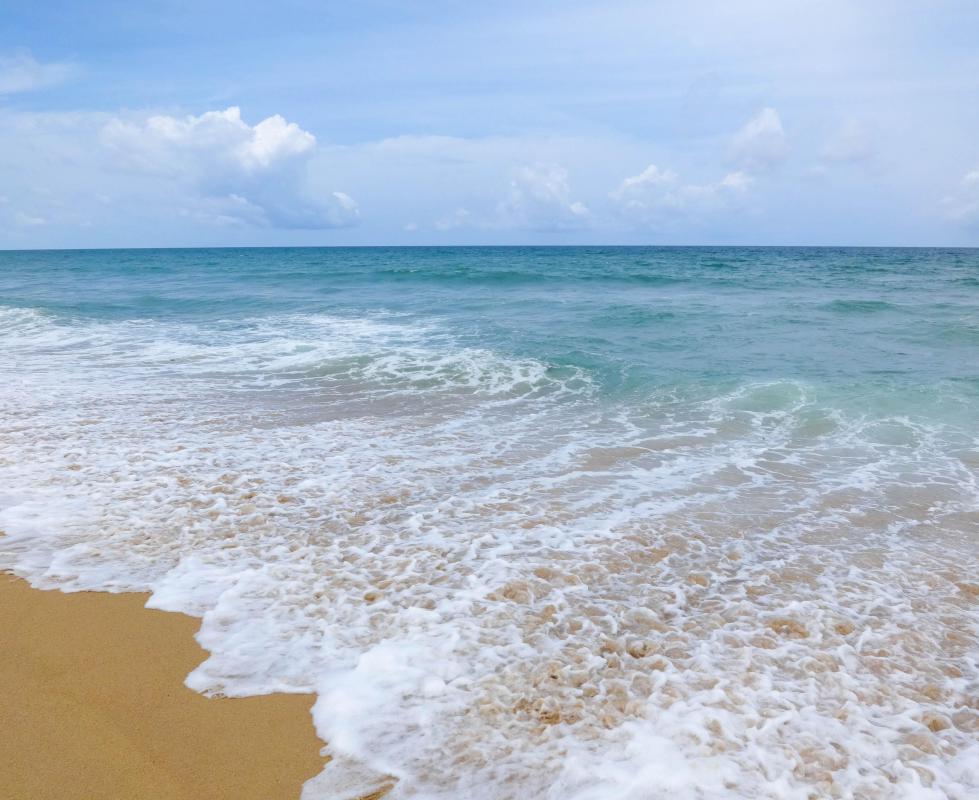What Is an Ocean Habitat?
The oceans form a vast marine environment covering over 70 percent of the surface of the earth. Within this immense setting, a wide range of habitats is found, from near-shore tidal communities to deep, cold ocean trenches, long thought to be devoid of life. Although not divided into biomes as land habitats are, the ocean habitat is divided into regions and habitats based on water depth and other characteristics. Two broad divisions are the coastal habitats, ranging from the shoreline to the edge of the continental shelf, and the open ocean environment, encompassing the area that extends beyond the continental shelf. Within a vertical column of ocean water, habitats can be divided into near-surface pelagic and deep-water demersal habitats.
Although some of the same factors affect the ocean habitat that affect land environments, many factors are unique to the marine environment. Wave action and tides can make the near-shore environment a harsh one with widely varying conditions. Salinity ranges from estuary habitats where salty ocean water combines with freshwater to the more stable salinity of open ocean habitat. Currents affect the temperature and food availability in many of the underwater habitats. The amount of light penetrating the water determines whether phytoplankton and ocean plants can survive and form the base of the various food chains.

Demersal or benthic habitats are found on the bottom of the oceans. They are divided into the shallower coastal benthic and the deep ocean benthic habitats found beyond the continental shelf. Coral reefs are a benthic habitat in shallow, warm waters where an abundance of light penetrates. Known for their great biodiversity, this ocean habitat depends on reef-building coral colonies. Within the reef, microenvironments are found supporting distinct communities at the front of the reef where wave action is greatest and in the calmer areas behind the reef.

A vastly different type of benthic habitat is found on the abyssal plains of the deep ocean floor. Here, no light penetrates and plants are not found. Organisms living in this ocean habitat are primarily detritus eaters, subsisting on the organic matter that floats to the bottom of the sea. Little studied due to the difficulties involved, this deep area is believed to be rich in biodiversity. Chemosynthesis forms the basis of life in the unique environments found near cold seeps and hydrothermal vents.

Kelp forests and anchored kelp beds exist in coastal zones where sufficient light penetrates the water to support plant life. These habitats are found primarily in polar and temperate zones. Rich habitats supporting diverse communities of sea creatures, kelp forests provide a vertical underwater environment. This ranges from the canopy at the surface to the benthic environment at the base of the kelp forest, each zone supporting a unique community of organisms. This ocean habitat has been extensively researched and is also economically important.
AS FEATURED ON:
AS FEATURED ON:













Discussion Comments
@Sporkasia - Environmentalist are always complaining about all of the ways people are harming the world, but the world is still turning. Some species of animals are going to go extinct regardless of what the reason. Isn't that the basis of Darwin's Survival of the Fittest theory?
I haven't counted, but I bet there are a lot more fish swimming around the ocean than fishermen will ever scoop up with their nets. You want proof of the ability of ocean habitats to adapt and survive? Then do a little research and read about how the fish and plants in the ocean have recovered after major oil spills.
The oceans and all the life in them is under constant attack from humans. We are damaging ocean habitat in so many ways that trying to list them all would be virtually impossible.
However, for starters, we need to do a better job of managing the way we fish the oceans. There are so many fish in the ocean that you would think there is no way we could ever over fish the waters, but this is exactly what we are doing.
And not only are we over fishing the waters, but we are fishing in ways that are harmful to animals such as dolphins and sharks. The numbers of animals killed and discarded because they happened to be in the wrong place at the wrong time and got caught in a fishing net is unbelievable and such a waste. Given enough time, we can destroy or seriously damage every ocean habitat out there.
I know the oceans are humongous when added together, but I am still surprised at how well ocean habitats have held up to all of the changes that people have brought about. I'm surprised there isn't more pollution and more animals in the ocean struggling to survive.
Post your comments